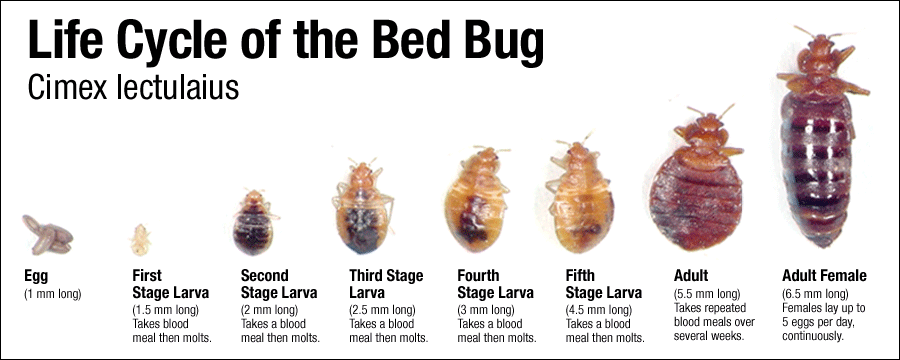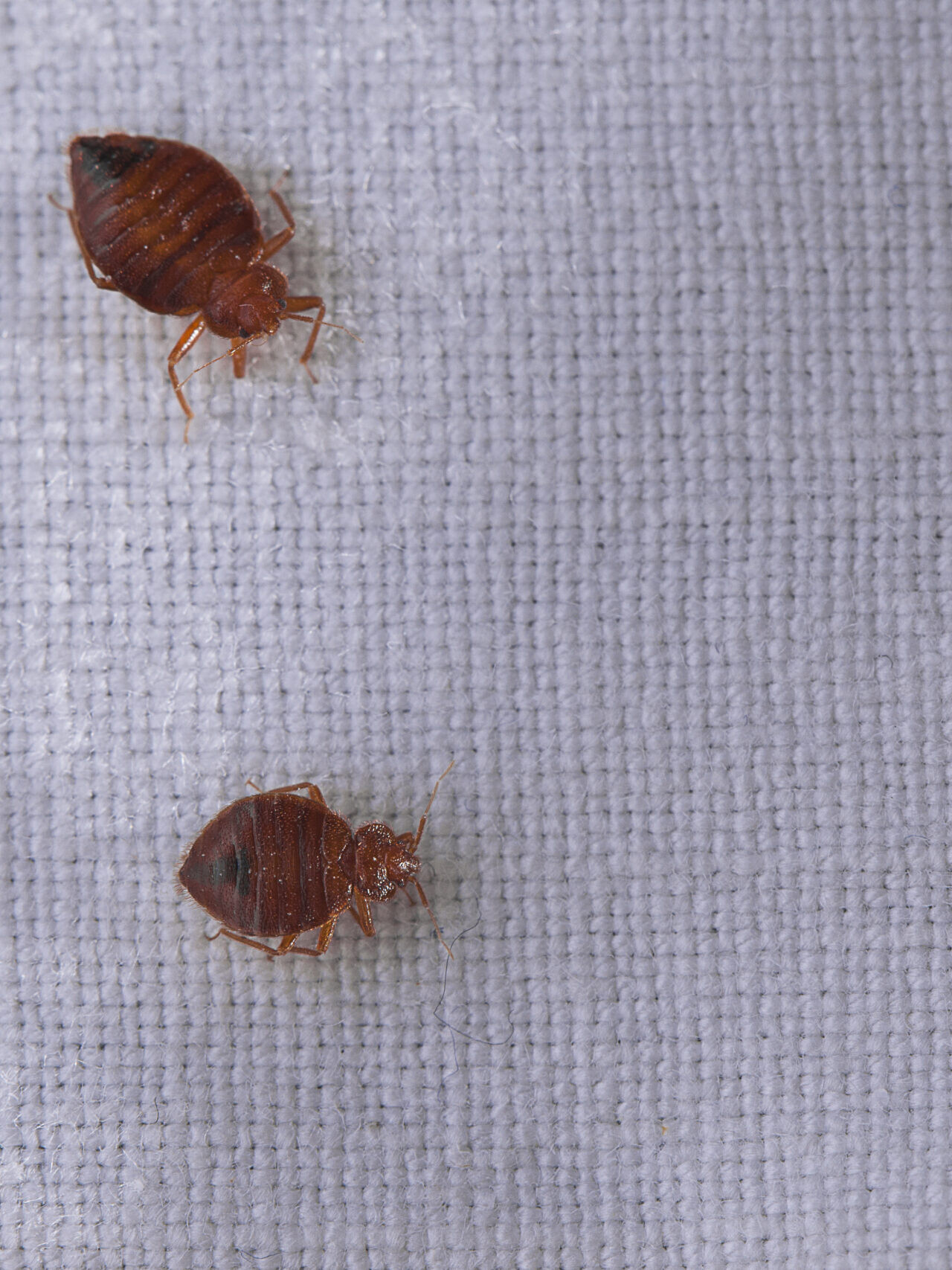How to Identify Bed Bug Bites and Prevent Future Infestations
How to Identify Bed Bug Bites and Prevent Future Infestations
Blog Article
Check Out the Various Kinds Of Parasite and Their Treatment Options for Effective Management
The management of parasites in both agricultural and residential settings requires a detailed understanding of the various types that can invade these environments, as well as the treatment choices available for effective control. From home rodents that present wellness dangers to garden insects that threaten crop yields, each classification demands a tailored method. Recognizing the nuances of bug actions and the equivalent solutions is crucial; however, the question stays: what are one of the most effective approaches that not just attend to existing invasions but likewise prevent future events?

Typical Home Vermin
Although family parasites can vary considerably in kind and habits, many share common attributes that make them a hassle. Common home insects consist of rats such as rats and computer mice, pests like roaches and ants, and occasional invaders such as spiders and flies. These pests typically flourish in atmospheres that offer simple access to sanctuary, food, and water, making homes especially prone.
Rodents, for example, are well-known for triggering structural damages and spreading out illness. They can nibble through electrical cables, potentially causing fire dangers. Bugs like cockroaches are not only disturbing yet can additionally cause allergic reactions and bronchial asthma in delicate individuals. Ants, while normally harmless, can invade cooking areas, rendering food resources unattractive.
Effective parasite monitoring starts with prevention, which consists of securing access points, maintaining sanitation, and utilizing suitable storage space approaches for food. Monitoring for indicators of infestation is essential, as very early detection can avoid a lot more considerable concerns. When infestations occur, various control methods exist, varying from catches and baits to expert elimination solutions. Understanding the practices and features of these usual household pests is essential for effective management and keeping a healthy living environment.
Garden Bugs and Their Effect
Garden parasites pose a substantial hazard to the health and wellness and productivity of plants, with some estimates suggesting that they can cause approximately 40% of plant losses in particular areas. These pests, which consist of bugs such as caterpillars, aphids, and beetles, as well as nematodes, can bring upon extreme damages by feeding upon plant tissues, resulting in stunted development, minimized yields, and endangered top quality.
The influence of garden parasites expands beyond simple aesthetic problems; they can interfere with communities by modifying food cycle, influencing pollinators, and spreading diseases amongst plants. For example, pests like the crawler mite can weaken plants, making them a lot more at risk to fungal infections. Furthermore, intrusive varieties may outcompete indigenous vegetation, leading to biodiversity loss.
Integrated Pest Management (IPM) practices, which combine biological control, cultural techniques, and targeted chemical applications, can provide sustainable options. By recognizing the specific pests and their habits, gardeners can carry out targeted therapies that not only secure their plants but also advertise a much healthier garden ecosystem.
Rats: Identification and Risks
Rodents prevail yard parasites that can position substantial dangers to plant health and total community stability. These little creatures, consisting of varieties such as voles, rats, and mice, are frequently determined by their sharp incisor teeth and durable bodies. Their hair pigmentation varies commonly, varying from gray to brownish, and they normally show a long tail which aids in equilibrium and dexterity.
The threats connected with rodent infestations are diverse. They can trigger substantial damage to plants and yards by gnawing on stems, origins, and fruits, which can lead to significant economic loss for gardeners and farmers. Second of all, rodents content are well-known for their function as vectors of various illness, including hantavirus and leptospirosis, which can be transferred to human beings and family pets. Their droppings and urine can pollute dirt and water resources, intensifying health dangers.
Additionally, rodents can interfere with the natural balance of local ecological communities by taking on native wild animals for sources. Their delving practices can result in dirt erosion and destabilization of plant origins. Very early recognition and understanding of rodent actions and risks are important for efficient pest monitoring.
Efficient Treatment Approaches
When taking care of rodent problems, using efficient therapy techniques is necessary for reducing damage and health and wellness risks. A multi-faceted approach usually generates the very best results. To start with, traps are a vital part of rodent control. these details Break catches and electronic traps supply a fast and gentle method to remove rodents, while adhesive catches can help keep an eye on task degrees.
Second of all, lure stations including rodenticides can be tactically placed in areas of high rodent activity. These stations need to be tamper-resistant to make sure the safety and security of non-target animals and kids. It is vital to select the appropriate bait kind, as rodents can establish bait aversion if not altered regularly.
Along with traps and bait, sealing access points can substantially lower the chances of re-infestation. This entails evaluating and fixing voids in home windows, doors, and walls.
Lastly, professional parasite control services can be helpful for substantial infestations. They possess the knowledge, tools, and items needed for efficient obliteration and can establish a customized management plan. By carrying out these treatment techniques, homeowner can successfully deal with rodent problems and shield their wellness and property.
Preventative Actions and Tips

Preserving cleanliness is just as critical; make sure that food is kept in impermeable containers and quickly tidy up spills or crumbs. Frequently throwing away waste and ensuring that compost heaps are handled appropriately can hinder pests from being drawn in to your home.
Additionally, consider landscaping techniques that dissuade rodent habitation. Trim plants and maintain mulch far from the foundation of your residential property, as these can supply concealing areas for bugs.
Final Thought
Efficient bug administration demands a comprehensive understanding of different pest types and their certain therapy choices. Eventually, a positive stance on insect monitoring promotes a much healthier environment, safeguarding both property and agricultural areas from pest-related obstacles.
Typical family insects include rats such as computer mice and read what he said rats, pests like roaches and ants, and occasional intruders such as crawlers and flies.Rats are usual garden bugs that can pose substantial risks to plant health and wellness and overall ecosystem stability. Very early recognition and understanding of rodent habits and threats are vital for efficient bug management.
Efficient insect management begins long prior to an infestation happens, with aggressive actions that can considerably decrease the likelihood of rodent entry and habitation.Reliable parasite monitoring demands a thorough understanding of numerous parasite types and their specific therapy options.
Report this page